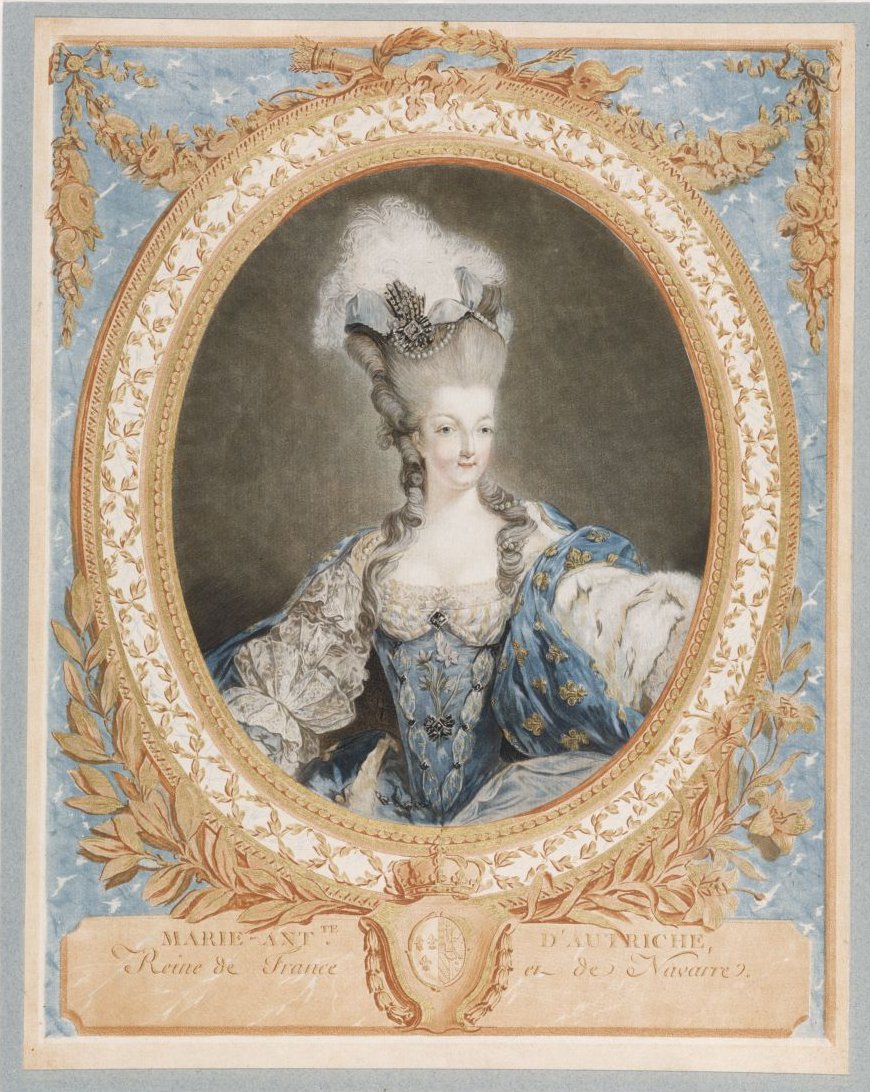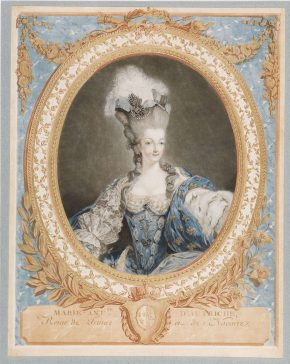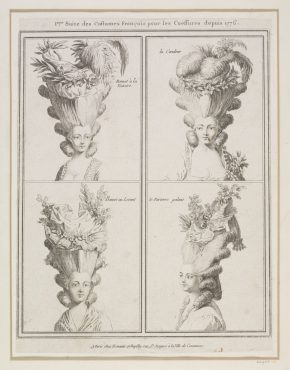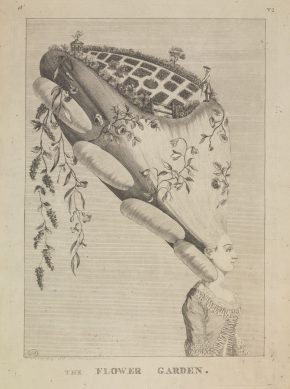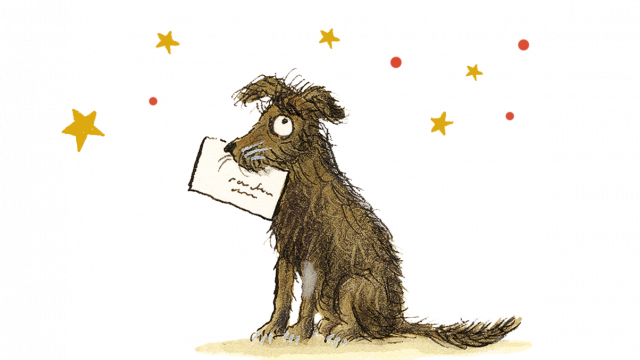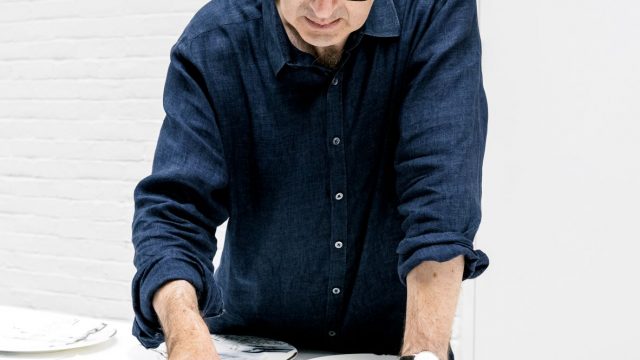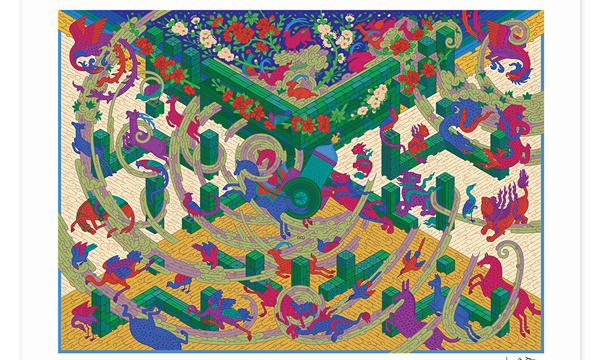INTRODUCING GUEST BLOGGER Sarah Grant, curator in the Word and Image Department at the V&A, and co-author of the V&A’s new publication Style and Satire: Fashion in Print 1777-1927
Style and Satire tells the entertaining story of European fashion and its most fantastical trends from two interrelated perspectives – the lavish, celebratory fashion plate, and the gloriously irreverent satirical print. Using wonderful contextual images Sarah unfolds the intricacies of a mother-daughter relationship, exposing all the usual debates to be a common occurrence even in the 18th century…
Like all devoted parents, Marie-Antoinette’s mother loved to give her advice. Through a constant stream of letters from Vienna to Versailles, Empress Maria Theresa dispensed wisdom on every aspect of the young French queen’s life, from diet to religion….
Caption: Portrait of an eighteen year-old Marie-Antoinette by François Hubert Drouais, one year before she became Queen of France
The empress recommended appropriate reading material; suggested suitable friends and pastimes; advised her daughter on how to navigate tricky court politics; how best to conceive and how to be a good wife, queen and Austrian. She was in some ways the greatest of all (unsolicited) agony aunts. But Maria Theresa reserved her choicest criticism for her daughter’s appearance. Marie-Antoinette’s love of fashion and all its glittering accoutrements is of course today well known.
Caption: 1777 print by Jean-François Janinet after a 1775 portrait of Queen Marie-Antoinette by Jean-Baptiste-André Gautier d’Agoty
It was in particular Marie-Antoinette’s adoption of ever more vertiginous hairstyles, as in the portrait seen above, and the negative press they attracted, that caused her mother some consternation. ‘I cannot help but touch upon a point that many of the papers repeat to me too often: it is the hairstyle that you wear’, Maria Theresa admonished, ‘They say that from the roots of the hair it measures 36 inches high and with all the feathers and ribbons that hold all of that up!’.[1]
The hairstyle Marie-Antoinette wore in Gautier d’Agoty’s portrait was copied and widely distributed as a fashion plate in one of the most famous luxury fashion journals of the day, La Gallerie des modes et costumes français, where the queen’s example would have gone on to influence countless other courtiers. Today we tend to associate fashion plates with the Victorians and indeed the term ‘fashion plate’ was coined in the 19th century, but these prints illustrating fashionable dress and deportment first emerged in the second half of the eighteenth century with the rise of fashion journalism. The journals featuring these fashion plates were bought and read by all women of good society and taste. The first fashion plates issued by La Gallerie des modes et costumes français were elaborate designs for dressing the head.
Caption: fashion plate from the 1ere Suite des Costumes François pour les Coeffures depuis 1776. (1st Suite of French styles for coiffures since 1776), published in La Gallerie des modes et costumes français, Paris, 1778
To create these extraordinary styles, hairdressers augmented their clients’ own, natural hair with false hairpieces and toupées, adding further volume through the use of wool pads and securing the additions with liberal amounts of pomade and powder. They also used intricately assembled wigs decked out with a profusion of flowers, ribbons, bows, feathers and jewels. Not surprisingly these extreme styles proved easy sport for satirists and more eighteenth-century satirical prints were dedicated to this particular fashion than any other, particularly in England, where French fashions were followed very closely.
Caption: ‘The Flower Garden.’, from the series Darly’s Comic Prints of Characters, Caricatures, Macaronies etc.,published by Matthew Darly, London, 1 May 1777
This coiffure, ‘The Flower Garden’, is tended by a miniature gardener and even contains a folly: a temple to Mercury visible in the distance. This may seem humorous exaggeration, but, in Paris, the duchesse de Lauzun was noted to have worn a similarly contrived wig, consisting of a landscape in relief, complete with ducks, a windmill and a miller leading his donkey.
Caption: Another of Darly’s satirical takes on big hair, published in 1777
Caption: Darly’s ‘The Extravaganza; The Mountain Head Dress of 1776’
The fashion for Marie-Antoinette’s ‘big hair’ did not outlast the decade and in the 1780s she switched to a comparatively more ‘natural’ look. The rest of the story is sadly all too familiar to us, but it might have been gratifying for the ill-fated queen to learn that the fashions she made so popular in the 1770s were revived, in the same spirit of luxury and frivolity, in the imagery of fashion plates of the 1920s.
Caption: Art Deco fashion plate designed by George Barbier, the figure bearing a marked resemblance to Gautier d’Agoty’s 1775 portrait of Marie-Antoinette
[1] Letter from Maria-Theresa to Marie-Antoinette, cited in Desmond Hosford, ‘The Queen’s Hair: Marie-Antoinette, Politics, and DNA’, Eighteenth-Century Studies (2004), vol. 38, no. 1, p. 189.
